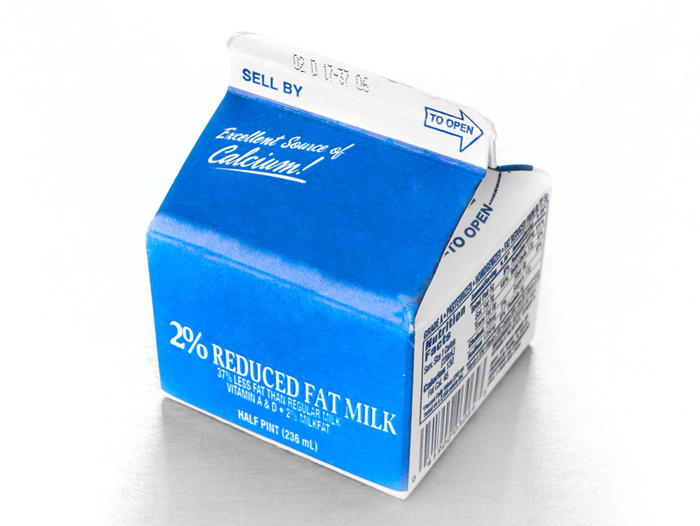IDFA and NMPF Urge USDA to Improve Child Nutrition and Food Security Through Increased Dairy Consumption in School Meals
April 1, 2022 | 5 min to read

WASHINGTON — The International Dairy Foods Association (IDFA) and the National Milk Producers Federation (NMPF) today submitted joint comments to the U.S. Department of Agriculture (USDA) Food and Nutrition Service urging the agency to improve nutrition security by updating school meal nutrition standards to encourage increased consumption of dairy in keeping with recommendations from the 2020-2025 Dietary Guidelines for Americans (DGA) report and with leading health organizations.
In 2020, the federal Dietary Guidelines Advisory Committee report found that a staggering 79 percent of 9- to 13-year-olds are not meeting the recommended intake of dairy foods and thereby under-consuming a variety of nutrients during childhood and adolescence, including potassium, calcium, and vitamin D. In their comments to USDA, IDFA and NMPF noted that school children of all ages are falling short of these recommendations, and they rely on school meals to meet their nutritional needs. IDFA and NMPF also noted that falling participation rates in school breakfast and lunch programs as a result of the COVID-19 pandemic are a growing concern for overall nutrition security among students.
USDA this spring announced transitional school meal nutrition standards for the next two school years that will allow schools to continue to serve low-fat flavored milk consistent with DGA recommendations, and pause overly stringent sodium reduction targets that threaten the ability of school meals professionals to serve nutrient-rich cheeses. USDA intends to craft more permanent standards for school year 2024/2025 and beyond that pave the way for healthy and nutritious school meals.
“IDFA applauds the USDA’s goal of creating ambitious, achievable, and durable nutrition standards for students that support positive health and development outcomes for children while improving nutrition security,” said Michael Dykes, D.V.M., president and CEO of IDFA. “The most recent DGA report is clear: children are not receiving enough essential nutrients for growth, development, healthy immune function, and overall wellness. School meals offer the most important opportunity of the day for children to get the essential nutrients they need, and dairy foods—including milk, yogurt, and cheese—are absolutely critical to building meals that children want to consume. Now the spotlight is on USDA to make dairy a central building block in its effort to craft ambitious, achievable, and durable school meal standards consistent with the DGAs.”
“On behalf of American dairy farmers, NMPF thanks USDA for their work to enhance school meal nutrition standards to reverse the underconsumption of dairy and help students boost their intake of key nutrients,” said Jim Mulhern, president and CEO of NMPF. “Milk and other dairy products support USDA’s critical goal of boosting consumption of essential nutrients, including potassium, calcium and vitamin D. Low-fat flavored milk is fully consistent with the Dietary Guidelines for Americans and is a nutrient-dense option that kids in schools choose to drink.”
In their joint comments, IDFA and NMPF urge USDA to embrace the recommendations of the DGA report and expand nutritious dairy options that encourage dairy consumption among children. USDA can do this by continuing flavored milk and yogurt offerings in schools and setting sodium limits that accommodate use of cheese in school meal products, the associations said.
An overall decline in school milk consumption has been identified in recent years, particularly after whole milk and low-fat flavored milk options were removed from school meals 10 years ago. “USDA can begin to reverse the trend through providing certainty for schools offering flavored milks, which provide the same micronutrients as white milk but with a flavor that many children prefer,” IDFA and NMPF said. “Flavored milks, like all cow’s milk, are a source of 13 essential nutrients, including calcium, vitamin D and potassium.”
Similarly, continuing to recognize flavored yogurt in school meals would encourage consumption of a nutritious dairy product that has been associated with higher diet quality in children, with higher intake of multiple nutrients, including calcium, potassium, magnesium, and vitamin D. In addition to being nutritious offerings for children, flavored milk and flavored yogurt have been shown to decrease food waste from school meals and increase overall meal participation.
View the comments here.
# # #
The International Dairy Foods Association (IDFA), Washington, D.C., represents the nation’s dairy manufacturing and marketing industry, which supports more than 3.3 million jobs that generate $41.6 billion in direct wages and $753 billion in overall economic impact. IDFA’s diverse membership ranges from multinational organizations to single-plant companies, from dairy companies and cooperatives to food retailers and suppliers, all on the cutting edge of innovation and sustainable business practices. Together, they represent 90 percent of the milk, cheese, ice cream, yogurt and cultured products, and dairy ingredients produced and marketed in the United States and sold throughout the world. Delicious, safe and nutritious, dairy foods offer unparalleled health and consumer benefits to people of all ages.
The National Milk Producers Federation, based in Arlington, VA, develops and carries out policies that advance dairy producers and the cooperatives they own. NMPF’s member cooperatives produce more than two-thirds of U.S. milk, making NMPF dairy’s voice on Capitol Hill and with government agencies. For more, visit www.nmpf.org.
